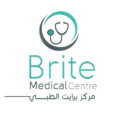Dental Advices Provided to you by: Brite Medical Center
Our wellness advice is expert-vetted. Our top picks are based on our editors’ independent research, analysis, and hands-on testing. If you buy through our links, we may get a commission. Reviews ethics statement
If you’re going to swish oil in your mouth, don’t miss these steps.
The ADA doesn’t yet recognize oil pulling as an effective dental care practice.
To promote a healthy smile and good hygiene, dentists recommend you brush your teeth twice a day and floss regularly. But some people are willing to try other trendy hacks and tricks to maintain their pearly whites. The internet is full of DIY tooth-whitening guides, charcoal toothpaste ads and “tooth hacks” like oil pulling.
Oil pulling involves swishing a tablespoon of edible oil, most commonly coconut oil, in your mouth before breakfast for five to 10 minutes, or as long as 20. The idea is that you “pull” bacteria out of your mouth, making your teeth whiter while promoting better dental health in general. Though the practice recently went viral, it dates back 4,000 years to ancient India, where it was used as a dental care practice to remove bacteria.
Does oil pulling work, or is it another toothy fad that’ll pass? After doing some research and speaking with professionals in the oral care industry, I found the right (and wrong) way to oil pull, and helpful advice on how to keep your teeth clean.
Looking for more dental care advice? Learn how to properly use your electric toothbrush and where you should store your toothbrush (hint: away from your toilet).
If you’re going to try oil pulling, here’s the safest and most beneficial way to do it.
1. Swish a tablespoon of sesame oil in your mouth for 15 to 20 minutes on an empty stomach before breakfast. (Children 5 or younger should swish only a teaspoon of oil.)
2. Sit in a chair while you swish with your chin up for the best results.
3. By the end, the oil should be thin and white, like milk. Spit the oil into the trash can when done.
4. Rinse your mouth after with warm saline water or regular tap water.
5. Move on to regular dental hygiene practices, including brushing and flossing.
1. Do not replace brushing your teeth with oil pulling. Brush twice a day and floss.
2. Do not swallow the oil, as it contains bad bacteria and toxins.
3. Spit the oil in a trashcan to avoid clogging your sink.
4. Oil pulling can be practiced three times a day before meals.
5. Practice consistently for 40 or more days for best results.
There is research that backs the legitimacy of oil pulling, but it’s limited.
A handful of small-scale studies show that oil pulling with sesame oil for 15 to 20 minutes a day for at least 40 days, alongside routine tooth brushing and flossing, can reduce plaque, bacteria and gingivitis. The studies relied on daily consistency and regular dental care.
One study involved 60 participants aged 16 to 18 with gingivitis who practiced oil pulling every day alongside brushing and flossing. There was steady improvement after day seven, and a 50% decrease in plaque formation and plaque induced gingivitis after four weeks.
In a separate study, researchers observed the effects of swishing with sesame oil versus chlorhexidine mouthwash in 20 adolescent participants. After two weeks there was a decline in plaque samples in the group who swished with oil, but a greater improvement in those who swished with the chlorhexidine mouthwash.
Another study mentioned 10 participants who practiced oil pulling with refined sunflower oil. They saw significant improvement in plaque and gingival scores after 45 days. All of this is to say there needs to be more conclusive research with larger control groups to determine if it’s a true supplement for brushing and flossing.
The American Dental Association doesn’t recognize oil pulling as a proper dental care practice due to the lack of scientific evidence to support it. While there are studies, each contains a small control group, typically around 20 to 60 people.
“There is always a new fad that comes along, like brushing with charcoal, which proved to be harmful on your enamel,” said Janelle Sparks, a registered dental hygienist who practices in the Bay Area.
“While I don’t know enough about coconut oil pulling specifically, I know plaque and tartar are what cause gingivitis. Typically, plaque can only be removed by using floss between the teeth and under the gums,” she says. “Plaque and tartar are both unable to be removed by swishing any type of liquid alone, mouthwash or oil. If you swish with oil and also focus on brushing and flossing your teeth, you should see more positive results.”
The bottom line is, some early signs are positive, but there needs to be more research done for the ADA and dentists to accept oil pulling as a true dental care hack. In the meantime, follow the tips above to safely and successfully practice oil pulling.
Eye Care
Dental Care
Mental Health
Other Personal Care
Book Your Appontment with Our Dental Team Now: Call: +97444147405
